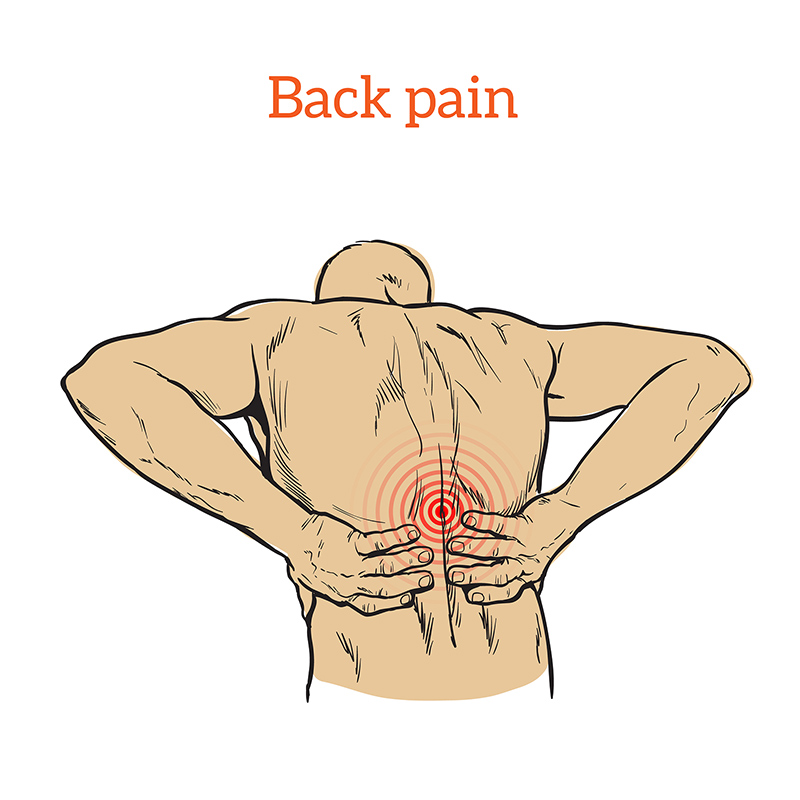 If you have been directed to this area of my website, it is because you have a unique spinal condition called a Transitional Lumbosacral Vertebrae. It is a big and potentially "scary" term, so lets see if we can clear up the mystery behind it. Let's break the word down into its three components:
If you have been directed to this area of my website, it is because you have a unique spinal condition called a Transitional Lumbosacral Vertebrae. It is a big and potentially "scary" term, so lets see if we can clear up the mystery behind it. Let's break the word down into its three components:
Transitional - A change in configuration from one state to another
Lumbosacral - The area in the lower back where the last vertebrae of the spine meets the sacrum (pelvis)
Vertebrae - Any one of the bones that make up the spine
A Transitional Lumbosacral Vertebrae is condition that occurs when the last vertebrae in the spine is improperly formed. It creates a situation where the number of vertebrae in the lower back is either increased by one or decreased by one. The normal number of vertebrae in the lower back, or lumbar spine is 5. When a Transitional Lumbosacral Vertebrae is present, you have either 4 lumbar vertebrae, making the spine shorter than usual or 6 lumbar vertebrae making the spine longer than usual. In addition to changes in the number of vertebrae and the overall length of the spine, the Transitional Lumbosacral Vertebrae is typically malformed. It takes on the structural characteristics of both a vertebrae and the sacrum..... while forming in the womb, it could not make up its mind which one to become so it became a little of both.
The combination of a variation in the number of vertebrae combined with a change in the overall length of the spine on top of having a malformed vertebrae creates unique challenges for this area that typically results in back pain!
General Facts Concerning Transitional Lumbosacral Vertebrae
- It occurs in approximately 6% of the population
- It is a birth defect not something that you caused
- It is recognized as a pre-disposing factor for lower back pain
- It leads to an alteration in the normal movements of the lower back
- 50% of individuals with a Transitional Lumbosacral Vertebrae also have a scoliosis
- The disc under a Transitional Lumbosacral Vertebrae is typically unformed and very thin
Bertolotti's Syndrome - Because of altered spinal movement in the area of a transitional lumbosacral vertebrae, the first normal disc above the transitional lumbosacral vertebrae tends to become overly stressed and ultimately damaged. This can lead to disc herniation along with "Sciatica." When this combination of events occurs it is known as Bertolotti's Syndrome. Simply put, Bertolotti's syndrome is a herniated disc one vertebral segment above a transitional lumbosacral vertebrae that is causing "Sciatica." Bertolotti's syndrome responds favorably to Cox Flexion Distraction, which is designed to effectively treat herniated discs. More information about Cox Flexion Distraction can be found by clicking on the link "Spinal Decompression" on this website.
Transitional Lumbosacral Vertebrae can be effectively treated with Cox Flexion Distraction, a form of traction done by the doctor that helps to separate and mobilize the vertebrae and relieve pressure on the nerve structures reducing the pain coming from this unique spinal malformation. Along with Chiropractic adjustments and physical therapy, this area can be effectively treated and managed to reduce the incidence of future flare-ups. Due to a tendency for the discs and cartilage in the area to be over-stressed and undergo degenerative changes, a nutritional supplementation in the form of a good "Joint Support Formula" can also be helpful in treating Transitional Lumbosacral Vertebrae of the spine.
If you, or a loved one, are experiencing pain contact our office to schedule a free NO obligation consultation with the doctor or email Dr. Garber with a question concerning your case for a quick response. Garber Chiropractic Care Center 770-386-7707
Chiropractic Care and Pain Relief for Cartersville, Acworth, Taylorsville, White and Euharlee GA.
